
An original equipment manufacturer (OEM) is generally perceived as a company that produces non-aftermarket parts and equipment that may be marketed by another manufacturer. It is a common industry term recognized and used by many professional organizations such as SAE International, ISO, and others.

Electrostatic discharge (ESD) is a sudden and momentary flow of electric current between two electrically charged objects caused by contact, an electrical short or dielectric breakdown. A buildup of static electricity can be caused by tribocharging or by electrostatic induction. The ESD occurs when differently-charged objects are brought close together or when the dielectric between them breaks down, often creating a visible spark.
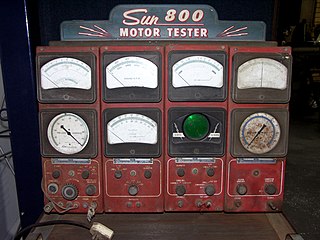
Engine tuning is the adjustment or modification of the internal combustion engine or Engine Control Unit (ECU) to yield optimal performance and increase the engine's power output, economy, or durability. These goals may be mutually exclusive; an engine may be de-tuned with respect to output power in exchange for better economy or longer engine life due to lessened stress on engine components.
The automotive aftermarket is the secondary parts market of the automotive industry, concerned with the manufacturing, remanufacturing, distribution, retailing, and installation of all vehicle parts, chemicals, equipment, and accessories, after the sale of the automobile by the original equipment manufacturer (OEM) to the consumer. The parts, accessories, etc. for sale may or may not be manufactured by the OEM.
A replacement automobile engine is an engine or a major part of one that is sold individually without any other parts required to make a functional car. These engines are produced either as aftermarket parts or as reproductions of an engine that has gone out of production.

A mechanic is a skilled tradesperson who uses tools to build, maintain, or repair machinery, especially cars.
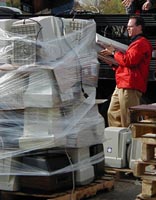
Electronic waste recycling, electronics recycling ore-waste recycling is the disassembly and separation of components and raw materials of waste electronics; when referring to specific types of e-waste, the terms like computer recycling or mobile phone recycling may be used. Like other waste streams, re-use, donation and repair are common sustainable ways to dispose of IT waste.
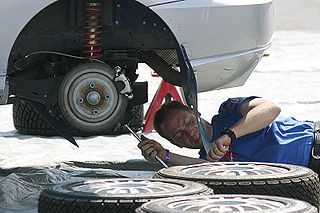
An auto mechanic is a mechanic who services and repairs automobiles, sometimes specializing in one or more automobile brands or sometimes working with any brand. In fixing cars, their main role is to diagnose and repair the problem accurately and quickly. Seasoned auto repair shops start with a (Digital) Inspection to determine the vehicle conditions, independent of the customers concern. Based on the concern, the inspection results and preventative maintenance needs, the mechanic/technician returns the findings to the service advisor who then gets approval for any or all of the proposed work. The approved work will be assigned to the mechanic on a work order. Their work may involve the repair of a specific part or the replacement of one or more parts as assemblies. Basic vehicle maintenance is a fundamental part of a mechanic's work in modern industrialized countries, while in others they are only consulted when a vehicle is already showing signs of malfunction.

Reuse is the action or practice of using an item, whether for its original purpose or to fulfill a different function. It should be distinguished from recycling, which is the breaking down of used items to make raw materials for the manufacture of new products. Reuse – by taking, but not reprocessing, previously used items – helps save time, money, energy and resources. In broader economic terms, it can make quality products available to people and organizations with limited means, while generating jobs and business activity that contribute to the economy.
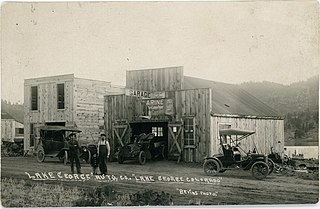
An automobile repair shop is an establishment where automobiles are repaired by auto mechanics and technicians. The customer interface is typically a service advisor, traditionally called a service writer.
Precycling is the practice of reducing waste by attempting to avoid buying items which will generate waste into home or business. The U.S. Environmental Protection Agency (EPA) also cites that precycling is the preferred method of integrated solid waste management because it cuts waste at its source and therefore trash is eliminated before it is created. According to the EPA, precycling is also characterized as a decision-making process on the behalf of the consumer because it involves making informed judgments regarding a product's waste implications. The implications that are taken into consideration by the consumer include: whether a product is reusable, durable, or repairable; made from renewable or non-renewable resources; over-packaged; and whether or not the container is reusable.
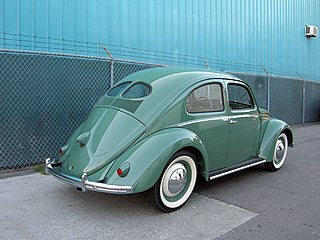
Conservation and restoration of road vehicles is the process of restoring a vehicle back to its original working condition, whether the car is partially scrapped or completely totaled. Automotive restoration can be applied to many different eras of the automobile. Bus preservation groups aim to purchase buses of various eras to restore them to their original operating condition. Buses are often restored to the original authentic livery of their original owner.

Waste are unwanted or unusable materials. Waste is any substance discarded after primary use, or is worthless, defective and of no use. A by-product, by contrast is a joint product of relatively minor economic value. A waste product may become a by-product, joint product or resource through an invention that raises a waste product's value above zero.

A parts washer is a piece of equipment used to remove contaminants or debris, such as dirt, grime, carbon, oil, grease, metal chips, cutting fluids, mold release agents, ink, paint, and corrosion from workpieces. Parts washers are used in new manufacturing and remanufacturing processes; they are designed to clean, degrease and dry bulk loads of small or large parts in preparation for assembly, inspection, surface treatment, packaging and distribution. Parts washers may be as simple as the manual "sink-on-a-drum" common to many auto repair shops, or they may be very complex, multi-stage units with pass-through parts handling systems. Parts washers are essential in maintenance, repair and remanufacturing operations as well, from cleaning fasteners, nuts, bolts and screws to diesel engine blocks and related parts, rail bearings, wind turbine gears boxes and automotive assemblies.

The EMD SD32ECO is a 3,150 hp (2,350 kW) C-C diesel-electric locomotive rebuilt by Electro-Motive Diesel. It is primarily the application of a conversion kit to an existing EMD SD60-type locomotive. This involves replacing the existing 710G3A V16 prime mover with an EPA Tier-II-compliant 710G3B-T2 turbocharged V12 engine, with electronic fuel injection. Many of the donor SD60's major components and subsystems are recycled, and are recertified as equal to new. However, the locomotive's control system is all new.
Break-in or breaking in, also known as run-in or running in, is the procedure of conditioning a new piece of equipment by giving it an initial period of running, usually under light load, but sometimes under heavy load or normal load. It is generally a process of moving parts wearing against each other to produce the last small bit of size and shape adjustment that will settle them into a stable relationship for the rest of their working life.
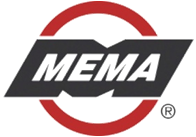
The Motor & Equipment Manufacturers Association (MEMA) was founded in 1904. MEMA represents more than 1,000 companies that manufacture motor vehicle components and systems for the original equipment and aftermarket segments of the light vehicle and heavy-duty motor vehicle manufacturing industry in the United States. Motor vehicle component manufacturers are the largest employer of manufacturing jobs in the U.S., contributing nearly 3 percent of the U.S. gross domestic product. Motor vehicle parts suppliers generate a total direct and indirect employment impact of 4.26 million jobs, up nearly 18 percent since 2012.

Motorenfabrik Hatz is a German manufacturer of diesel engines, based in Ruhstorf an der Rott, Lower Bavaria, Germany. Especially known for its small, lightweight and robust engines, the engines are mainly used in all kinds of small construction machinery, for generators or pumps
Right to repair is a legal right for owners of devices and equipment to freely modify and repair products such as automobiles, electronics, and farm equipment. This right is framed in opposition to restrictions such as requirements to use only the manufacturer's maintenance services, restrictions on access to tools and components, and software barriers.













